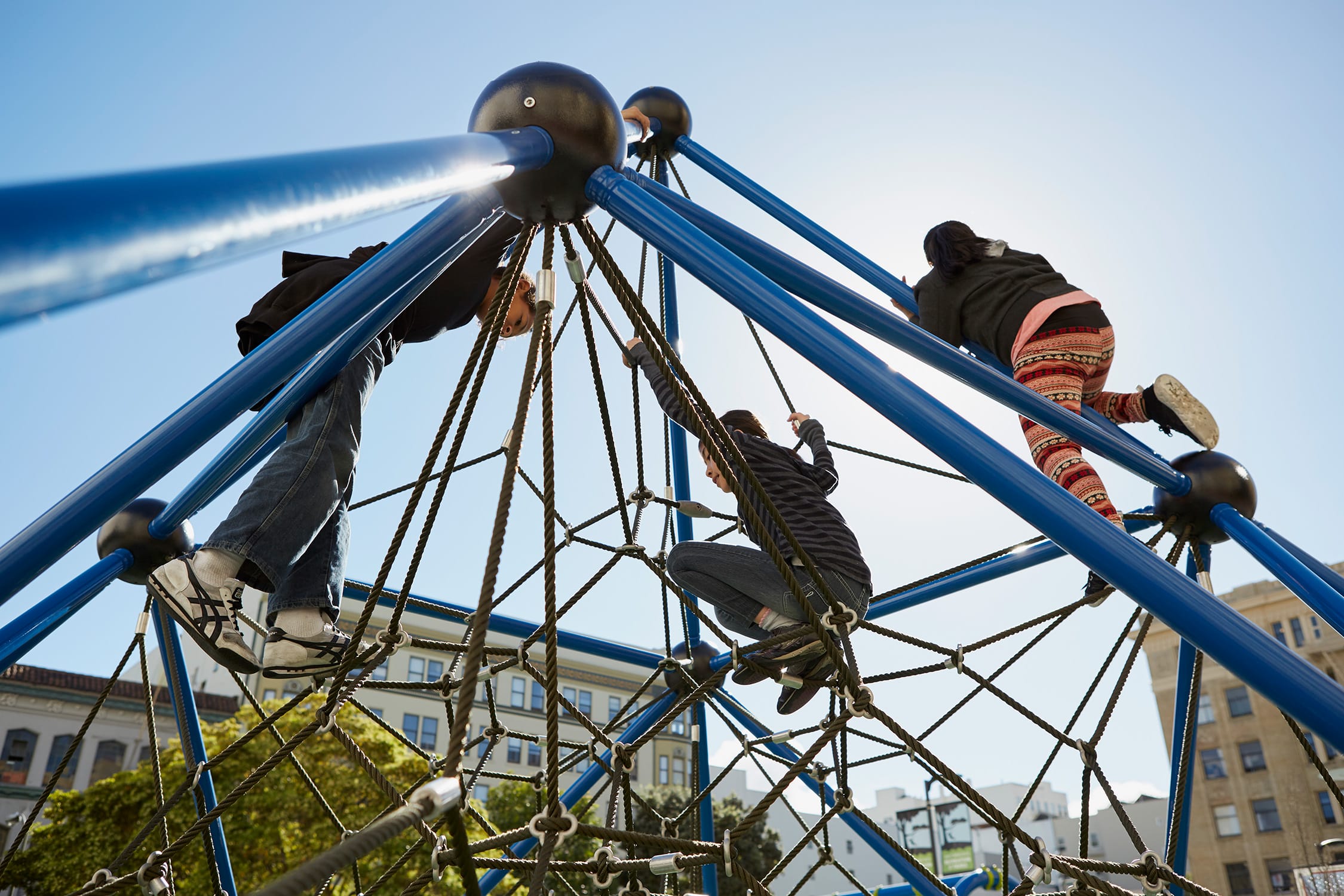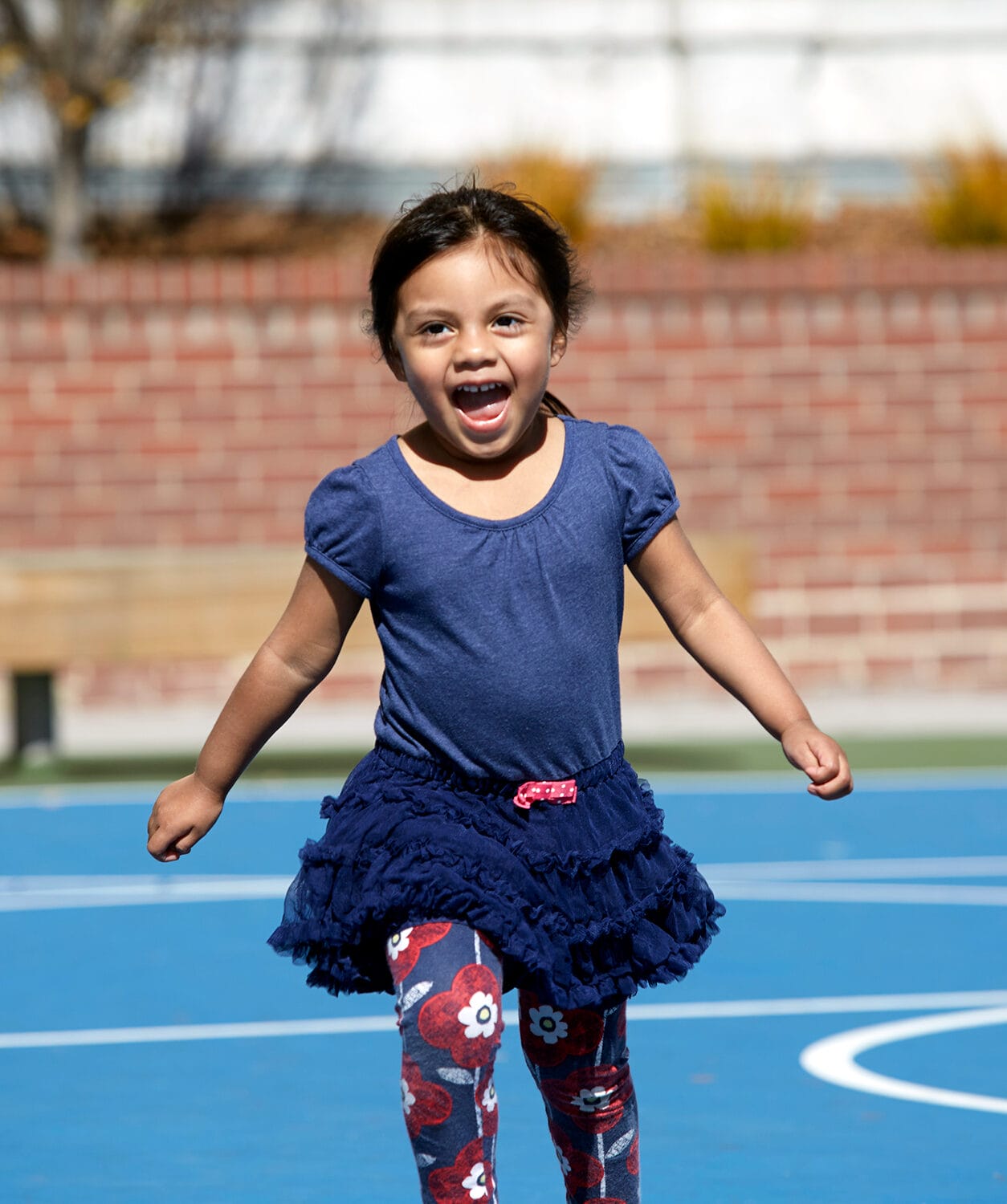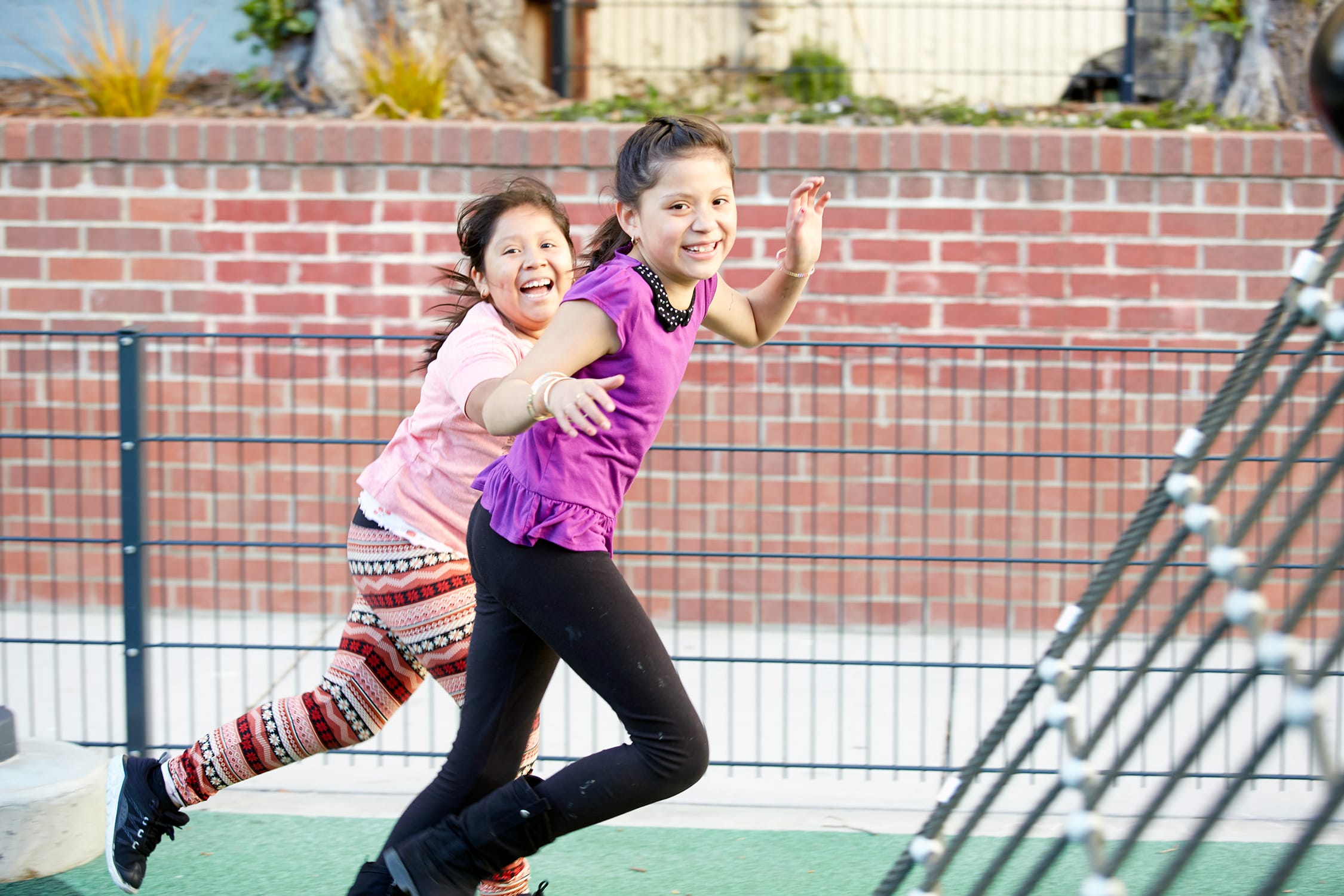More than 4,000 kids live in San Francisco’s Tenderloin, a diverse, low-income neighborhood with a high homeless population. In fact, it has the highest population density of any area in the city and the most children per capita. And its open spaces are often underutilized or unknown—or don’t meet the needs of residents.
A model of TPL’s community-led approach, Father Alfred E. Boeddeker Park—once ranked the city’s worst playground—has become a point of pride for Tenderloin residents since its redesign and reopening in 2014. And it has given the neighborhood’s children, many of whom have minimal space at home, let alone a lawn or yard, something invaluable: a safe place to play.
We spoke with Dr. Peter Gray, psychologist and author of Free to Learn: Why Unleashing the Instinct to Play Will Make Our Children Happier, More Self-Reliant, and Better Students for Life, about why community play and room to explore outdoors are so critical to healthy childhood development.
As a psychologist, can you begin by talking about the mechanisms and functions of play?
Play is how children learn to take control of their own lives, to make decisions, to negotiate with their peers without some authority figure stepping in to solve problems. It’s also how children make friends and learn to get along with one another.
Tell us about self-determination theory.
It’s based in a large realm of research that initially focused on the idea and the evidence that when people are doing what they have decided to do, as opposed to what they feel coerced to do, they do it with much more joy, and they do it better. [When] you let students pursue their own interests . . . they learn really deeply. They don’t all learn the same things, of course not, because they’re interested in different things. But in a world where there’s so much to know, why would we want everyone to learn the same thing?

Open play spaces are crucial to healthy mental and physical development in children; Boeddeker Park in San Francisco’s Tenderloin provides exactly that. Photo: Jeremy Beeton
And the same is true for play?
Yes. Play should be self chosen and self directed. One of the big difficulties today is that children rarely get away from adults, and adults seem not to be able to refrain from telling children what they can and cannot do. Children are not able to simply play freely.
One of the offshoots of self-determination theory is the idea that there are certain basic psychological needs—autonomy, competence, and relatedness—that are almost as important as the physical needs of food, water, and oxygen. Autonomy is the sense of volition—the ability to act out of free will. Competence is the sense that I am able to do the things I want to do. And if I’m not able now, I’m capable of learning how to do them. As we’ve taken play and other self-determined abilities away from children, what we see is an incredible rise in anxiety, depression, suicidal thoughts, [and] actual suicides, which are now eight times higher than when I was a kid in the ’50s.
Donate today to support our work bringing accessible public green spaces to cities in California.
What advice would you give community planners to ensure that they are thinking and investing holistically in play so children are empowered to develop their self-determination and so parents can release their grip and their anxieties about free-ranging their kids?

Since reopening Boeddeker Park, where a girl enjoys free play time, TPL has celebrated the opening of Sergeant John Macaulay Park and Turk-Hyde Mini Park in the Tenderloin, among other projects in the area. Photo: Jeremy Beeton
There’s a book by Mike Lanza called Playborhood. In it, Lanza describes six or seven very different communities where the people themselves figured out a way for their children to play freely. One of those was a housing project, I think in the Bronx, where the parents quite legitimately were afraid to let the kids out to play because of crime and drug pushers and traffic. At the initiative of probably one parent who got other parents involved, they got the city to close off the street at certain hours after school and on weekends, so that did away with the traffic. They got grandmothers—who have a certain authority—to sit out there to drive the drug pushers away. They created a time when it was safe to play.
There’s another lesson there: if you’re going to go into a neighborhood and make a playground, you want to let the community plan it. Bring the kids and adults to the table. What do they want?
“Play is how children learn to take control of their own lives . . . without some authority figure stepping in to solve problems.”
– Dr. Peter Gray, author and psychologist
Why is it important that play spaces honor and fit into a community’s narrative?
It’s important that the community feel invested in it and that it’s theirs. When the community wants it to work because they’ve created it out of their own self-determination, they have ownership in managing it and ensuring its success. They’ll use it and take care of it.
I would love every neighborhood in the country to have a play committee made up of adults and kids, where they’re in touch with people [and] hold regular meetings to ask what they can do in the neighborhood to facilitate play and to make it safe. We have to find a way that parents feel safe and involved, and we have to find a way that there’s going to be some critical number of kids there. The most important element to encourage play is other kids who are in control of themselves and their play.
Deborah Williams is Trust for Public Land’s editorial director. Prior to joining TPL, she spent more than 20 years writing and editing for consumer and trade media in the lifestyle, travel, ski, and outdoor industries.
One-third of Americans, including 28 million children, lack safe, easy access to a park within a 10-minute walk of home. Urge your senators to allocate funding to create parks and enhance outdoor recreational opportunities by championing the Outdoors for All Act today!

Donate to become a member, and you’ll receive a subscription to Land&People magazine, our biannual publication featuring exclusive, inspiring stories about our work connecting everyone to the outdoors.

